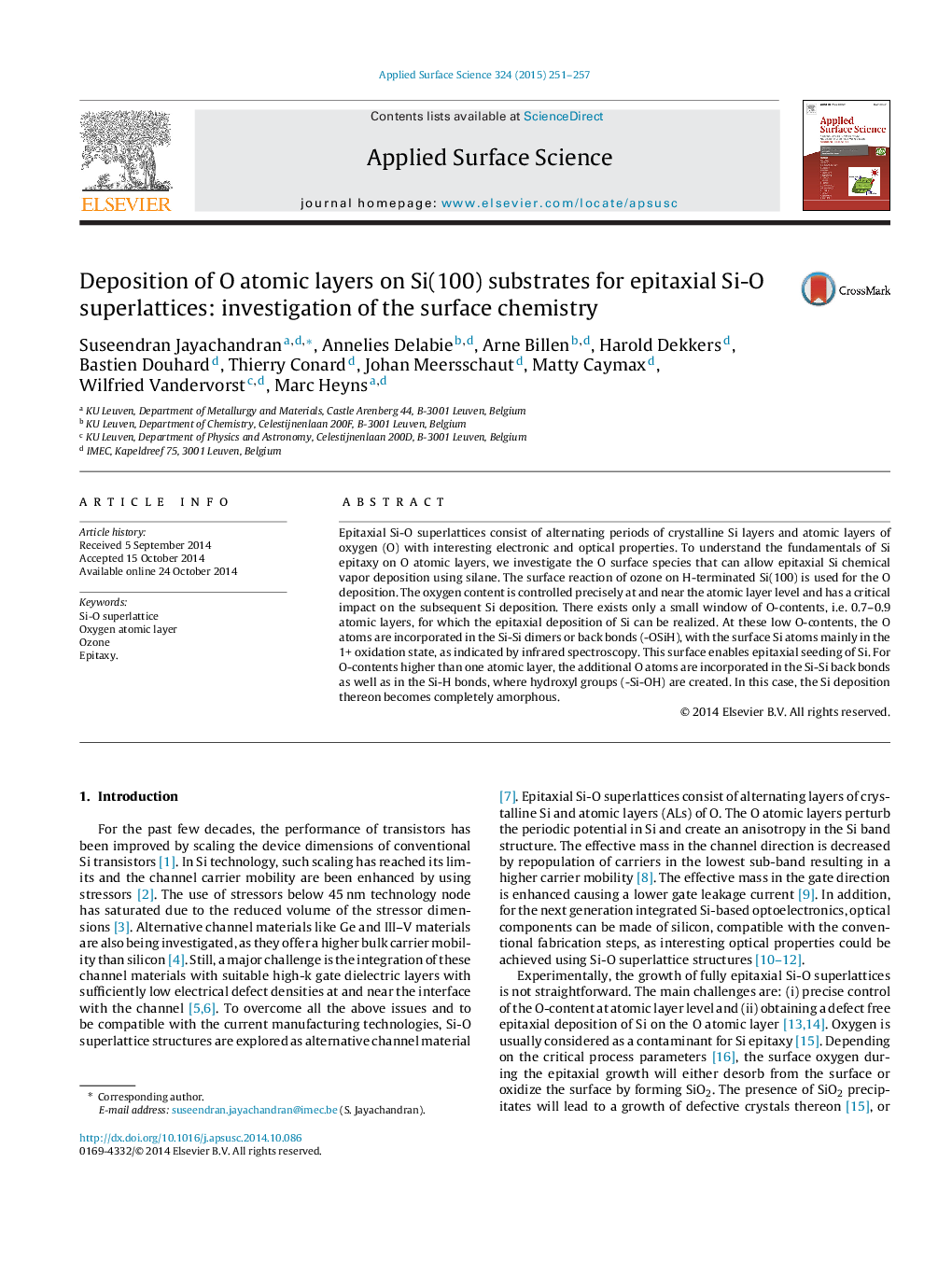| Article ID | Journal | Published Year | Pages | File Type |
|---|---|---|---|---|
| 5349024 | Applied Surface Science | 2015 | 7 Pages |
Abstract
Epitaxial Si-O superlattices consist of alternating periods of crystalline Si layers and atomic layers of oxygen (O) with interesting electronic and optical properties. To understand the fundamentals of Si epitaxy on O atomic layers, we investigate the O surface species that can allow epitaxial Si chemical vapor deposition using silane. The surface reaction of ozone on H-terminated Si(100) is used for the O deposition. The oxygen content is controlled precisely at and near the atomic layer level and has a critical impact on the subsequent Si deposition. There exists only a small window of O-contents, i.e. 0.7-0.9 atomic layers, for which the epitaxial deposition of Si can be realized. At these low O-contents, the O atoms are incorporated in the Si-Si dimers or back bonds (-OSiH), with the surface Si atoms mainly in the 1+ oxidation state, as indicated by infrared spectroscopy. This surface enables epitaxial seeding of Si. For O-contents higher than one atomic layer, the additional O atoms are incorporated in the Si-Si back bonds as well as in the Si-H bonds, where hydroxyl groups (-Si-OH) are created. In this case, the Si deposition thereon becomes completely amorphous.
Keywords
Related Topics
Physical Sciences and Engineering
Chemistry
Physical and Theoretical Chemistry
Authors
Suseendran Jayachandran, Annelies Delabie, Arne Billen, Harold Dekkers, Bastien Douhard, Thierry Conard, Johan Meersschaut, Matty Caymax, Wilfried Vandervorst, Marc Heyns,
